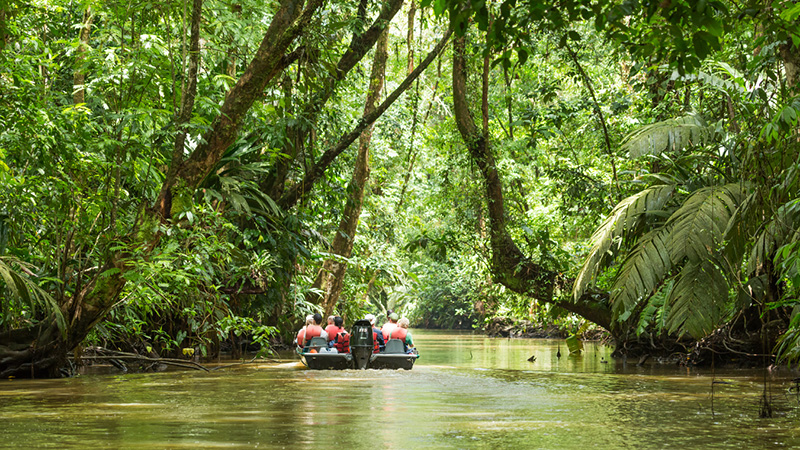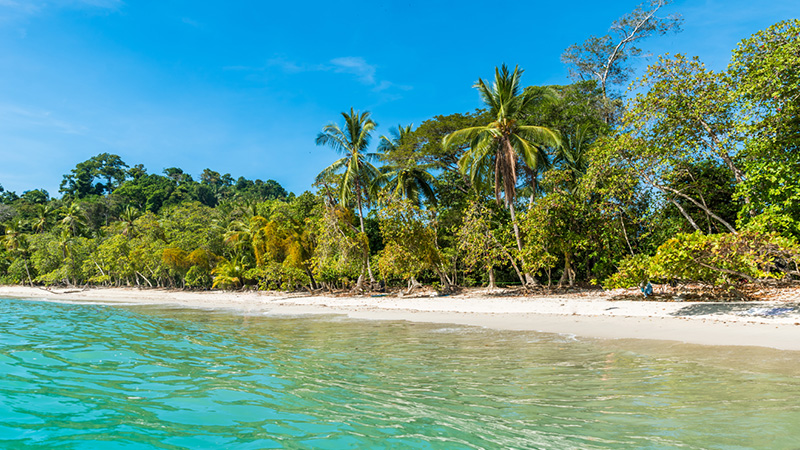
Costa Rica is one of the world’s top eco-destinations, and it’s no wonder why. Behold rugged volcanoes that feel like scenes from Jurassic times and wander through lush rainforests. Watch sea turtles shuffle toward the ocean, surf epic overhead waves, stand amidst the clouds in a cloud forest, and witness the wonders of national parks. Around 25% of the country’s land is protected, preserving its natural splendour and magnificent wildlife.

Costa Rica is clearly brimming with outdoor adventures, but that’s not all it offers. Beautiful beaches, vibrant cities, a rich culture, and more are also what draw travellers to this tropical paradise—especially during the drier months.
But while Costa Rica may be a tropical paradise, it isn’t all sunny days, gently swaying palm trees, and perfect conditions year-round. Multiple climates exist within the country, which experiences rainy seasons and dry seasons. Peak tourism times bring a heavy flow of travellers to the area, and certain wildlife only puts on seasonal shows. Thus, different parts of the year can offer different travel experiences.
Ultimately, the “best” time to visit Costa Rica depends on where you’re going, what you want to do, and what type of experience you’re looking to have.
Understanding Costa Rica’s Climate
With its various elevations, proximities to the coast, and other influences, Costa Rica contains multiple climates. Each climatic region has its own unique characteristics and seasonal norms, so be sure to research the exact destination you’re visiting for specifics. (Visit Costa Rica offers detailed descriptions for each region.)
Generally speaking, though, Costa Rica doesn’t experience huge temperature swings throughout the year. Average highs typically stay in the 70s, 80s, or 90s, with lows in the 50s, 60s, or 70s (Fahrenheit).
While there may not be extreme temperature fluctuations, there are wet and dry seasons. Because these seasons impact conditions, they’re often a consideration when timing a trip.
Costa Rica’s Dry Season (December to April)
As the name suggests, the dry season, or “summer,” consists of drier conditions. Precipitation is possible but is usually on the lighter side. For many areas, this season lasts from around December to April.
However, in some regions, the dry season isn’t so, well, cut and dry. For example, Tortuguero—which is located on the Caribbean coast—can see inches of rainfall every month. February, March, September, and October generally make up the area’s drier periods, but even then, travellers shouldn’t expect long stretches of sunny, rain-free days.
Advantages of Visiting During the Dry Season
The dry season is the best time to travel for ideal weather. Travellers can enjoy more sunny days and less humidity—perfect for visiting the beaches in Costa Rica. Reduced rainfall amounts also keep hiking trails more manageable, which is particularly helpful when visiting the already-humid cloud forests.

Disadvantages of Visiting During the Dry Season
In tourism terms, the dry season is the high season. Better weather—plus spring break and international holidays—equals more tourists, which in turn means more crowds. With those crowds can come higher prices, more competition for attractions, and more hustle and bustle around popular spots.
Costa Rica’s Rainy Season (May to November)
For most of Costa Rica, the rainy season generally lasts from around May to November. While this time of year brings more precipitation, that doesn’t necessarily mean downpours every day. Certain months (and places) are rainier than others, and rainfall might just occur at certain times of day, like the afternoon or evening.
Advantages of Visiting During the Rainy Season
The rainy season is the off-season or low season: the time of year when fewer travellers visit a destination. Low season perks can include fewer crowds, more affordable prices, quieter stays, and a local-living feel. The rainy season is also known to bring more beautiful, lush landscapes and vibrant flora, earning it the nickname, “green season.”

Disadvantages of Visiting During the Rainy Season
As much as the vegetation loves the rain, travellers don’t always feel the same way. Trails can get muddy, there’s a potential for flooding, and some roads might need maintenance. Those sensitive to high humidity might be uncomfortable, and mosquitos and insects can be more of a bother. Parts of the rainy season also overlap with the hurricane season.
Best Time to See Wildlife in Costa Rica
With about 25% of its land protected, Costa Rica pulls nature and wildlife enthusiasts from around the world. From its rainforests to its coastal waters, Costa Rica hosts an abundance of animal and plant life.
Photographers can snap photos of monstrous crocodiles, and lucky visitors can spot great green macaws, chatty monkeys, and more. Whales breach waters along the coast, sea turtles hatch along the beach, and birds sing from the tree tops.
If you’re visiting for a glimpse of that magnificent wildlife, chances are you’re looking to time that trip just right.
Bird Watching in Costa Rica
Costa Rica is home to many year-round birds and migratory species. Some consider the dry season to be an ideal time for bird-watching. It offers advantages like less rainfall and clearer days, which can bring better visibility, easier spotting, and increased bird activity. But don’t knock the rainy season. Lush, thriving environments can attract our feathered friends, and smaller crowds make for better viewing opportunities. Plus, bird migration patterns can vary, so you might catch some of these birds during the wet season.
Sea Turtles in Costa Rica
Sea turtles are one of this tropical paradise’s treasures (and travellers on our Costa Rica: A World of Nature tour can learn about them with a visit to a conservancy). Both the Pacific coast and Caribbean coast are places where sea turtles nest and hatch. But, there are multiple turtle species and hatching locations. Peak activity timing depends on the type of sea turtle and where you’re looking, so travellers should seek out specific information based on their destination.

Monkeys and Other Animals in Costa Rica
Monkeys and other wildlife can be seen throughout the year. Costa Rica’s national parks and nature reserves are populated by various species, making them great places to peek into the animal kingdom. Of course, animals like to operate on their own schedules—regardless of our travel plans—so if you have certain sightings or tours in mind, specific research can help you determine the best times and places to catch a glimpse.
Planning Your Costa Rica Trip
The best time for your Costa Rican adventure is entirely up to you, your priorities…and sometimes a little luck. After all, there’s always a chance that a destination deviates from its usual patterns. That said, any time of year offers its own set of advantages.
But an epic trip isn’t just about timing. It’s also about planning, and at Collette we’re passionate about using our expertise to plan fantastic tours. Let us bring you to Costa Rica on one of our thoughtfully designed trips, where you can experience nature, culture, and more. Contact us today to book your next travel expedition.

